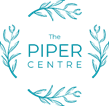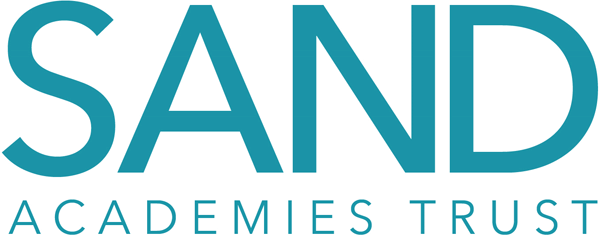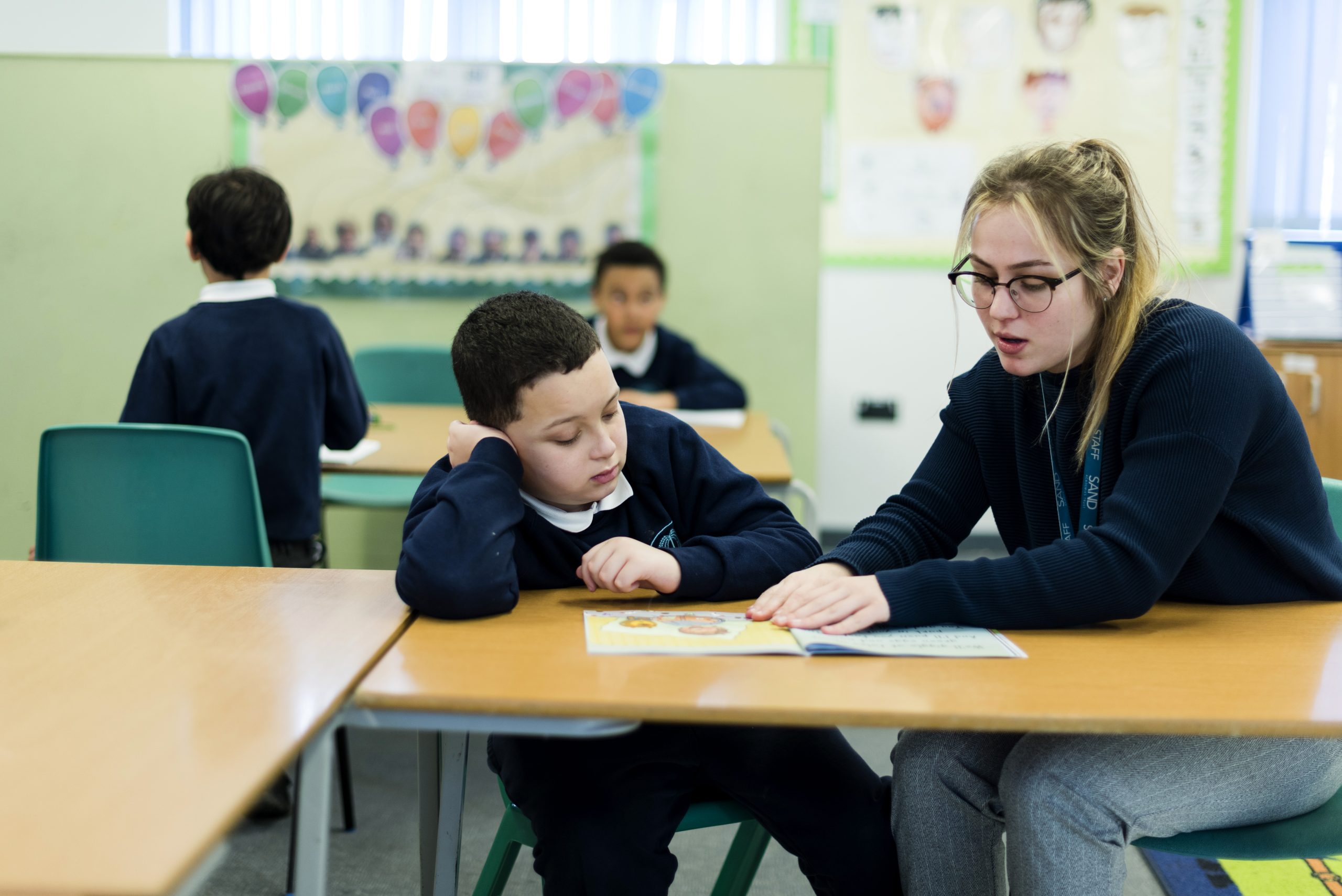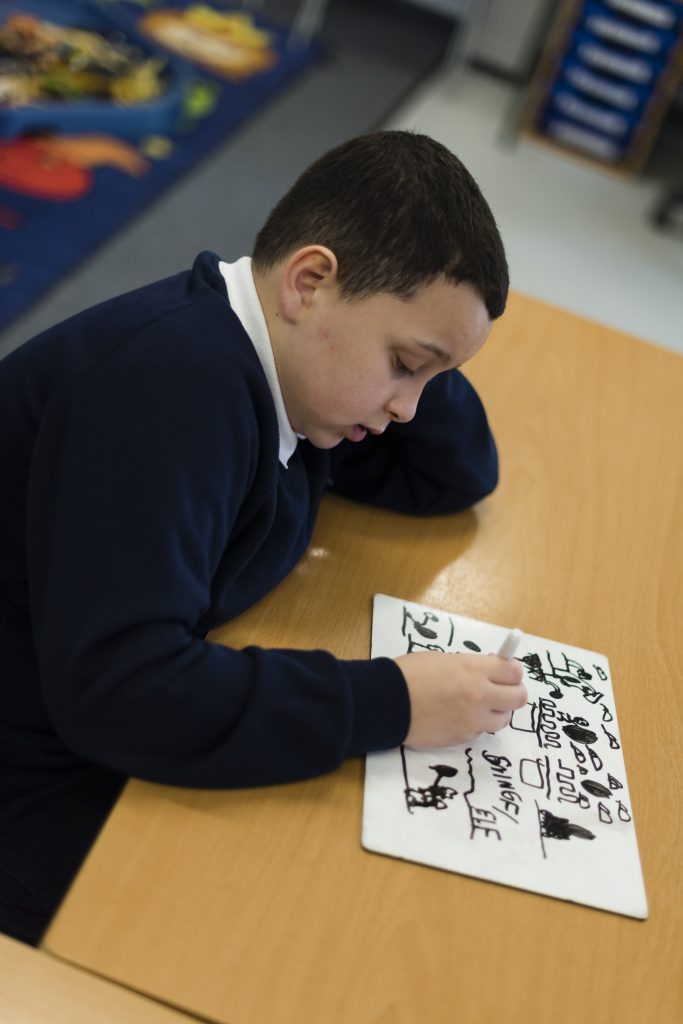At The Piper Centre we consider enjoying and experiencing books and reading to be one of life’s most enriching skills. We aim to create a stimulating environment where children are encouraged to engage with and experience books and all forms of written material. The reading and literacy opportunities that we provide reflect the unique learning needs of our pupils which range from individualised pathways to Government approved formal phonics schemes.
We provide a range of experiences that include multi-sensory approaches and encourage practical application of reading to support the development of both communication and life skills. Every pupil participates in a wide range of language activities, auditory development, phonics and regular story-telling sessions that are fun-filled opportunities to develop speaking and listening skills, and where the emphasis is on children’s active participation.
At The Piper Centre we follow a whole-school phonics and reading readiness pathway which is based on robust assessment and on choosing the right pathway and tools for each individual pupil. It is essential that pupils have a firm foundation of early phonics skills at whatever point they enter our school family. This includes the teaching of sound discrimination – environmental sounds, instrumental sounds, body percussion, rhythm and rhyme and voice sounds.

Reading is a life skill, which lays the foundations for all other learning across the curriculum. Therefore, we value the importance of early reading and make it a priority, as soon as our children are ready.
“Teach a child to read and keep that child reading and we will change everything. And I mean everything.” Jean Winterson.
This quote epitomises the intent of the Read Write Inc. programme (RWI), which we use to teach phonics at The Piper Centre. RWI is a systematic, synthetic phonics programme that explicitly teaches children to read accurately and fluently. The ability to decode quickly makes reading effortless. This makes reading more enjoyable and enables children to develop their comprehension, so that they can begin to read for pleasure. We have a pre phonics pathway and readiness for Read, Write Inc assessment programme.
The RWI reading books that the children access in their daily phonics sessions at school are matched to the children’s phonic knowledge and are fully decodable. Reading at home should be enjoyable. It should be a time where children are able to ‘show off’ their reading skills to their family!
The systematic teaching of phonics takes place when children are ready to engage in a phonics programme. Pupils work within ability groups, which are defined by their performance on RWI assessments. The Piper Centre is committed to ensuring every pupil will learn to read, regardless of their needs, background and abilities.
Each RWI lesson is consistent and is based on the 5 Ps –
- Pace – Good pace is essential to each lesson.
- Praise – Children learn quickly in a positive climate.
- Purpose – Every part of the lesson has a specific purpose.
- Participation – All pupils are involved in all parts of the lesson through choral response and partner work. A strong feature of RWI lessons is partner work and the partners ‘teaching’ each other (based on research which states that we learn 70% of what we talk about with our partner and 90% of what we teach).
- Passion – This is a very prescriptive programme. It is the energy, enthusiasm and passion that teachers put into the lesson that bring the teaching and learning to life!
Children are taught to:
- recognise sounds and blend them together (Fred Talk using our character – Fred Frog);

- decode letter/sound correspondences quickly and effortlessly;
- read ‘tricky’ (red words) on sight;
- read fluently and with expression;
- understand what they read;
- spell quickly and confidently when writing, by segmenting the sounds within words;
- acquire a fluent handwriting style.
Pupils start by learning Set 1 sounds during speed sounds sessions. These are sounds written with one letter:
m a s d t i n p g o c k u b f e l h r j v y w z x. ‘Set 1’ also includes sounds written with two letters (‘special friends’): sh th ch qu ng nk ck ff ss ll. They will read words containing these sounds, by sound-blending, e.g. m–a–t mat, c–a–t cat, g–o–t got, f–i–sh fish, s–p–o–t spot, b–e–s–t best, s–p–l–a–sh splash. They will also learn to spell these words using their ‘Fred Fingers’. Whilst learning set 1, your child will bring home sound blending books, ditty sheets or red story books.
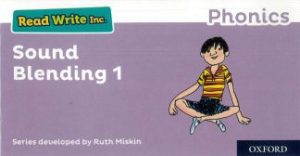
Pupils should also be confident with ‘Set 2’ sounds. These are special friends and include: ay ee igh ow oo (long) oo (short) ar or air ir ou oy. They will continue to read words with these sounds and write words in their speed sound sessions. Whilst learning set 2, your child will bring home green, purple and pink story books.
Pupils should be confident with ‘Set 3’ sounds. These are alternative spellings for the sounds already learned: ea oi a-e i-e o-e u-e aw are ur er ow ai oa ew ire ear ure. They will continue to read words with these sounds and write words in their speed sound sessions. During set 3, we start to get the children using the letter names, rather than the sounds. Whilst learning set 3, your child will bring home orange, yellow, blue and grey story books.
It is really important that the sounds for each of the single letters and special friends are pronounced correctly. Please see our video to support you with this.
